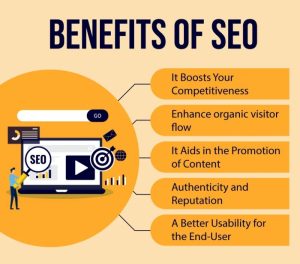
Step into the future with Web design trends 2025, where we explore the cutting-edge innovations and exciting developments shaping the digital landscape. From AI integration to sustainable design practices, get ready to dive into the dynamic world of web design!
Web Design Trends 2025
In the ever-evolving world of web design, staying updated with the latest trends is crucial to creating engaging and user-friendly websites. Design trends not only impact the aesthetics of a website but also play a significant role in user experience and functionality.
Dark Mode Design
Dark mode design has gained popularity in recent years and is expected to continue as a prominent trend in 2025. This design choice not only reduces eye strain but also adds a sleek and modern look to websites. Implementing dark mode can enhance the overall user experience and make content stand out more effectively.
3D Elements and Graphics
With advancements in technology, 3D elements and graphics are becoming more accessible to web designers. Integrating 3D elements can create a more immersive experience for users and add a sense of depth and realism to websites. This trend is expected to continue to grow in popularity in 2025.
Minimalist Design
Minimalist design focuses on simplicity and clean layouts, allowing for easy navigation and a clutter-free aesthetic. This trend is expected to remain popular in 2025 as it enhances user experience by reducing distractions and emphasizing essential content. Minimalist design also helps improve website loading times, which is crucial for user engagement.
Augmented Reality (AR) Integration
As AR technology becomes more widespread, integrating augmented reality elements into web design is expected to be a significant trend in 2025. AR can provide interactive and engaging experiences for users, allowing them to visualize products or services in a more immersive way. This trend has the potential to revolutionize the way websites are designed and experienced.
Emerging Technologies
In the ever-evolving landscape of web design, emerging technologies play a crucial role in shaping the future of digital experiences. Technologies like AI, AR, voice search, virtual reality, and IoT integration are revolutionizing the way websites are designed and interacted with.
Artificial Intelligence (AI) in Web Design
Artificial Intelligence has gained significant traction in web design, enabling personalized user experiences through data analysis and predictive algorithms. AI-powered chatbots, dynamic content generation, and smart recommendations are just a few examples of how AI is transforming the digital landscape.
Augmented Reality (AR) Impact on Web Design
Augmented Reality is blurring the lines between the physical and digital worlds, offering immersive experiences on websites. AR integration allows users to visualize products in real-time, try virtual try-ons, and engage with interactive content, enhancing user engagement and driving conversions.
Voice Search and Virtual Reality Influence
Voice search and Virtual Reality are reshaping the way users interact with websites. Voice-activated search functionalities are becoming more prevalent, leading to the optimization of websites for voice queries. Virtual Reality, on the other hand, offers immersive storytelling and interactive experiences, creating a more engaging browsing experience for users.
Internet of Things (IoT) Integration in Website Design
The Internet of Things is revolutionizing website design by enabling seamless connectivity between devices and websites. IoT integration allows for personalized experiences, real-time data tracking, and enhanced user interactions. From smart home devices to wearable technology, IoT is transforming the way websites are designed to cater to the connected world.
User Experience Focus
In 2025, user-centric design is more crucial than ever in creating a successful and engaging website. By prioritizing the needs and preferences of users, businesses can improve customer satisfaction, increase conversions, and build brand loyalty.
Enhancing User Experience through Design
One strategy for enhancing user experience is to focus on a clean and intuitive interface. Simplifying navigation, utilizing white space effectively, and ensuring fast loading times can all contribute to a positive user experience. Additionally, incorporating interactive elements such as animations, micro-interactions, and chatbots can engage users and make the website more dynamic.
- Implementing responsive design to ensure the website is accessible on all devices.
- Utilizing user feedback and analytics to continuously improve and optimize the website.
- Creating a seamless and consistent design across all pages to maintain brand identity.
Role of Personalization and Customization
Personalization and customization play a significant role in web design by tailoring the user experience to individual preferences and behaviors. By analyzing user data and behavior, businesses can deliver personalized content, product recommendations, and targeted marketing messages.
- Utilizing AI algorithms to personalize content based on user interactions and preferences.
- Offering customization options such as theme selection, language preferences, and personalized settings.
- Implementing dynamic content that adapts to user behavior in real-time.
Sustainability in Design
In today’s world, sustainability has become a crucial aspect of every industry, including web design. Sustainable design practices not only help reduce the environmental impact but also contribute to creating a better future for the planet. Let’s explore the importance of sustainable design in the web design industry and how it is shaping the way websites are being developed.
Eco-friendly Design Trends
Implementing eco-friendly design trends in web design not only helps in reducing carbon footprint but also enhances user experience. Some of the popular sustainable design elements include:
- Minimalist Design: Opting for a clean and simple design not only reduces the size of the website but also improves loading speed, resulting in lower energy consumption.
- Use of Sustainable Web Hosting: Choosing hosting providers that run on renewable energy sources like solar or wind power helps in reducing the carbon footprint of the website.
- Optimized Images and Videos: Compressing images and videos reduces the amount of data that needs to be transferred, resulting in lower energy consumption and faster loading times.
- Responsive Design: Creating websites that are optimized for all devices ensures that users have a seamless experience, reducing the need for multiple versions of the same site.
Impact on the Industry
The shift towards sustainable design practices is not only beneficial for the environment but also for businesses. Companies that prioritize sustainability in their web design are seen as socially responsible, which can attract environmentally conscious customers. Additionally, sustainable design can lead to cost savings in the long run, as energy-efficient websites require less maintenance and resources.
Web Design and Development

Web design and development go hand in hand to create functional and visually appealing websites. Designers focus on the look and feel of the site, while developers work on the technical aspects to bring the design to life.
Collaboration between Designers and Developers
Effective collaboration between designers and developers is crucial for the success of a website. Designers provide the creative vision and user experience expertise, while developers bring that vision to reality through coding and implementation. By working together, they can ensure that the final product not only looks great but functions seamlessly as well.
Importance of Responsive Design
Responsive design is essential in web development as it ensures that websites adapt to different devices and screen sizes. This means that users can have a consistent experience whether they are browsing on a desktop, tablet, or smartphone. By prioritizing responsive design, developers can improve user experience and reach a wider audience.
Making Money Online
In today’s digital age, making money online has become more accessible than ever before. With the right strategies and a well-designed website, individuals and businesses can generate revenue through various online channels.
Monetization Strategies
- Advertising: Implementing display ads, native ads, or sponsored content on your website can generate income based on clicks or impressions.
- Affiliate Marketing: Partnering with brands and promoting their products or services through affiliate links can earn you a commission for every sale or lead generated.
- Subscription Services: Offering premium content or services behind a paywall can create a recurring revenue stream for your website.
- Online Courses or Workshops: Sharing your expertise through online courses or workshops can be a lucrative way to monetize your website.
Role of E-commerce
- E-commerce plays a crucial role in generating revenue online by allowing businesses to sell products or services directly through their website.
- Creating a user-friendly e-commerce platform with secure payment gateways and seamless checkout processes can boost sales and revenue.
- Utilizing e-commerce analytics to track customer behavior and optimize the online shopping experience can lead to increased conversions and profitability.
Tips for Profitable Online Presence
- Focus on User Experience: Design your website with the user in mind to enhance engagement and drive conversions.
- Optimize for : Implementing search engine optimization strategies can improve your website’s visibility and attract more organic traffic.
- Mobile Responsiveness: Ensure your website is mobile-responsive to cater to the growing number of mobile users and provide a seamless browsing experience across devices.
- Social Media Integration: Leverage social media platforms to promote your website and reach a wider audience, driving traffic and potential sales.
Directory
In today’s digital age, having a strong online presence is crucial for the success of any website. Search Engine Optimization () plays a vital role in ensuring that your website is visible to your target audience. By optimizing your website for search engines, you can improve your website’s ranking and increase organic traffic.
Importance of in Web Design
is essential in web design as it helps improve the visibility of your website in search engine results pages (SERPs). By incorporating best practices into your web design, you can attract more organic traffic, increase your website’s credibility, and ultimately drive more conversions.
- Utilize relevant s: Conduct research to identify the terms and phrases your target audience is searching for. Integrate these s strategically throughout your website’s content.
- Optimize meta tags: Create compelling meta titles and descriptions that accurately represent the content of each page on your website.
- Mobile optimization: Ensure that your website is mobile-friendly to improve user experience and enhance performance.
Impact of on Website Visibility and Traffic
has a direct impact on your website’s visibility and traffic. Websites that are optimized for search engines are more likely to appear higher in search results, leading to increased visibility and click-through rates.
By implementing best practices, you can enhance your website’s visibility, attract more organic traffic, and ultimately improve your online presence.
Final Thoughts

As we wrap up our journey through Web design trends 2025, it’s clear that the future of website design is filled with endless possibilities. Embracing emerging technologies, focusing on user experience, and prioritizing sustainability are just a few key takeaways to stay ahead in this ever-evolving field. Get ready to revolutionize your online presence with these trends in mind!
FAQ Guide
What are some key design trends to look out for in 2025?
Some key trends include AI integration, sustainable design practices, and a focus on user-centric design.
How important is it to stay updated with design trends?
Staying updated is crucial to remain competitive and provide users with a modern and engaging experience.
What role does play in web design for 2025?
is vital for enhancing website visibility and attracting organic traffic, making it an essential aspect of web design in 2025.





